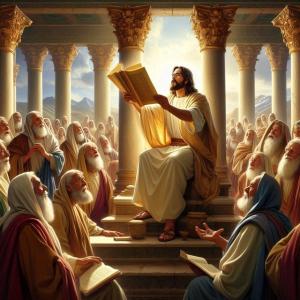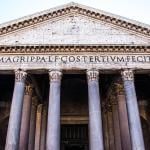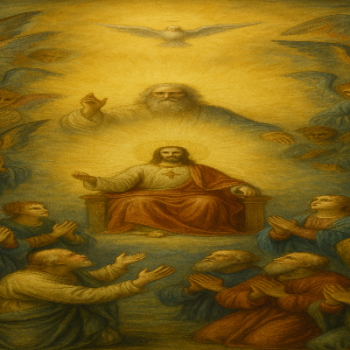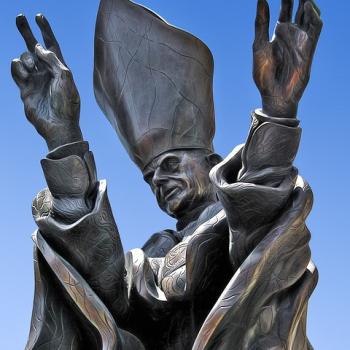
Reconciling The Biblical Canons
To read the Bible correctly requires a certain amount of nuance. What do I mean by correctly? I mean that each book of the Bible has to be categorized appropriately. In turn, this entails that any examination of the text must consider the genre of the particular book, the historical context, who the author was, who the intended audience was, and the purpose of the text.
Additional problems arise when one seeks to harmonize the Old and New Testaments. For example, it is well documented that the God of the Old Testament appears quite different from the God depicted in the New Testament.
In light of the various genres utilized by its authors and the theological problems associated with the nature of God, how can the Old and New Testaments be reconciled to become the Bible we have today?
Two Canons?
Viewing the Bible as a miniature library rather than a single book can be helpful. For example, the Catholic Bible is composed of seventy-three books. Forty-six books make up the Old Testament, and twenty-seven the New Testament. Each Testament, therefore, is a canon. A canon is generally defined as a list of books or writings the Catholic Church deems authoritative and inspired by God.
The need for two separate canons or testaments is primarily owing to the two major covenants God made with humanity. However, some schools of thought have argued that covenants are not the only point of division between the two testaments.
Determining what books would become a part of the Bible cannot be divorced from divine revelation. Specifically, it is the influence and guidance of the Holy Spirit that provides the foundation for the Bible. Christ Himself makes this clear to His apostles. “But the Counselor, the Holy Spirit, whom the Father will send in my name, he will teach you all things, and bring to your remembrance all that I have said to you” (John 14:26).
Nevertheless, this process – determining the biblical canons – took twelve hundred years. Ultimately, the canon of the Catholic Church was affirmed by the Council of Rome (382), the Synod of Hippo (393), two of the Councils of Carthage (397 and 419), the Council of Florence (1431–1449) and finally, by the Council of Trent (1545–1563).
The above provides a basis for examining some problems reconciling the Old and New Testaments.
Out With The Old (Testament)?
It has been observed by Christians and atheists alike that the Old Testament depiction of God differs dramatically from how God is portrayed in the New Testament. Indeed, commencing with Marcion of Sinope, there have been those who claim that the God of the Old Testament is so vastly different from the God depicted in the New Testament that they must be two different figures, two gods.
Because Marcionism was predicated on a dualistic theology (two gods), Marcion rejected the Old Testament entirely. One sees echoes of Marcionism today in the claims that Christians and Jews do not worship the same God. While Marcionism was rightly condemned as a heresy, it did raise interesting and even theologically problematic questions. The difficulties made manifest by Marcionism can, I think, be condensed into three questions, which I will examine below.
It should be pointed out, however, that the Church fathers were almost unanimously opposed to denying the validity of the Old Testament, and Church fathers like Tertullian and Justin Martyr wrote extensively against Marcion. They emphasized the unity of God’s nature and action throughout the Old and New Testaments and argued for their continuity.
However, as indicated above, at least three central issues must be addressed when arguing for that continuity.
Connecting The Two Testaments
The first problem is fundamentally theological as it relates to the nature of God. One may infer, for example, that the God of the Old Testament is a God of wrath, while the God of the New Testament is a God of love. However, since the Biblical data supports the existence of only one God, this explanation falls short. (See Deuteronomy 6:4-5 and Mark 12:29-31).
A sounder argument is to state that God engages with human beings in much the same way a father does with his children. When Israel sinned (which they did frequently), God punished them, but always forgave Israel. This chastisement was not lost on the New Testament authors. (Hebrews 12:6). Children grow, and people change, and God responds accordingly. Put differently, God does not change, but people do.
The second question to be addressed concerns the nature of the various covenants God made with humans. In a sense, covenants are a thread that runs throughout the Bible. A covenant is God’s promise to human beings and is intricately connected to the third problem regarding salvation.
The various covenants (frequently broken by Israel) reach their apex in Jesus Christ. So, rather than the covenants being a deterrent to connecting the two testaments, they should be viewed as ties that bind. (Hebrews 7:22).
Finally, and interrelatedly, there is the question of how salvation is effected. Here again, instead of a hindrance to reconciling the two canons, we can view soteriology as a theme reaching its pinnacle in Christ’s saving work. In a different light, we can see the Old Testament as describing efforts by God to save humanity from the effects of their sins. This rescue effort reaches its culmination or completion in Christ Jesus.
Conclusion
Progressive revelation, the concept that God has revealed Himself and His plan for redemption in stages, is paramount to reading the Bible canonically. If this is true, if God reveals Himself to humanity in the course of human history, then the importance of reconciling the Old and New Testaments becomes manifest.













